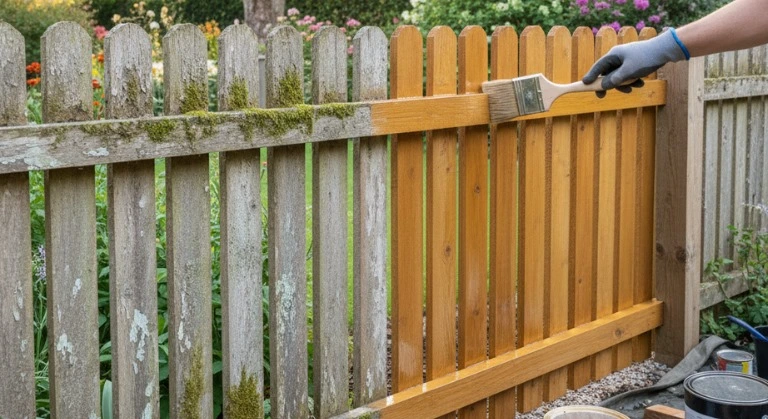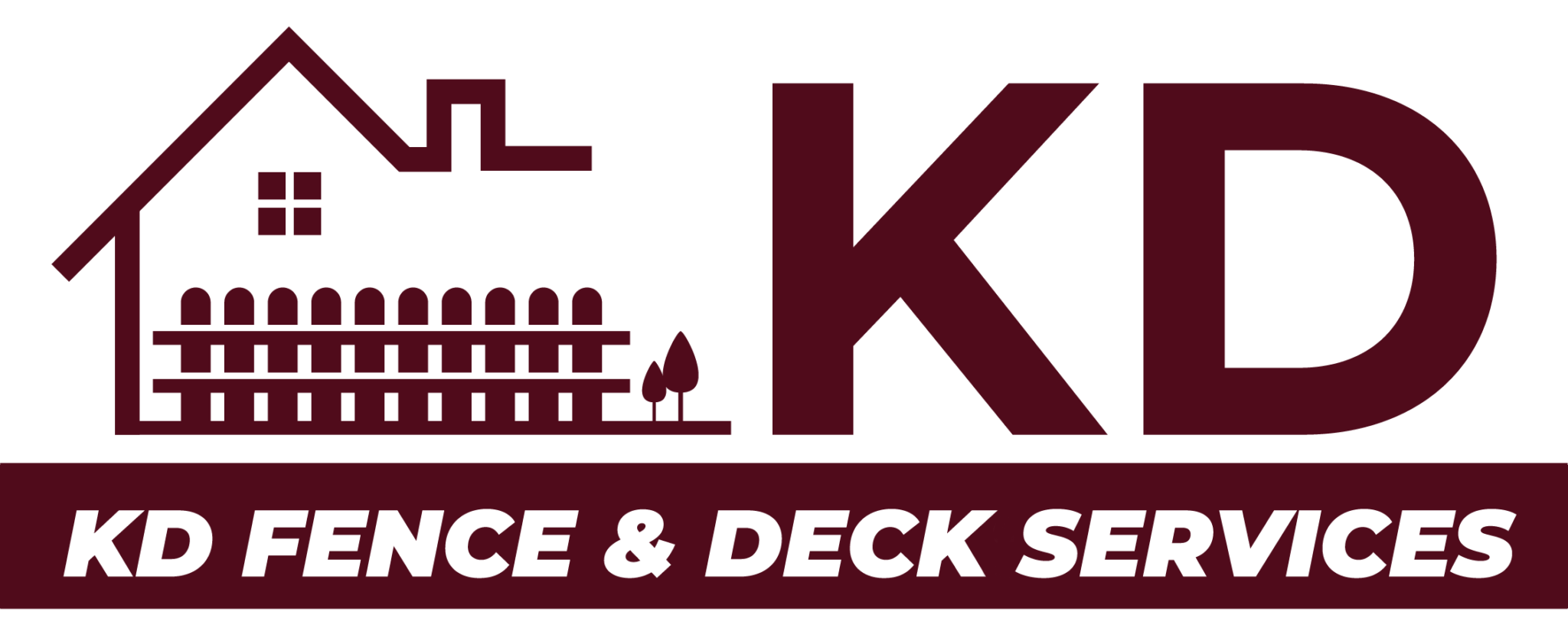Can I extend the fence’s lifespan through protective treatments to get more benefits and less trouble? It is a question so many people pose when they see wood rot, rust creeping up on metal, or two-tone vinyl that wears out, and so on.
Let’s explore some of the trusted schemes, defensive measures, and fence maintenance concepts that you can adopt today to add some years to your fence’s life and make your fence a very robust and appealing barrier.

Why You Should Prioritize Fence Protection
All the fences need to stand in the way of the of nature: rain, sun, wind, insects, and changing weather conditions.
However, with smart fence protective treatments, it is possible to increase fence durability, reduce repair costs, and contribute to in extending lifespan of a fence.
By doing so, you will also be maintaining the aesthetics of the property and curb appeal, and will therefore have a prolonged investment.
We will discuss the ways of looking after various fence materials and the treatments that actually matter.
Understanding the Types of Fences & Their Vulnerabilities on Why They Need Regular Fence Maintenance
Wood Fences
Wood fences are famous for their natural appearance; however, they can easily rot and decay, be infested by insects, warp, and be damaged by UV rays.
Metal Fences
Fences made of steel, wrought iron, or aluminum are durable, although it is essential to the prevention metal fence rust. It is without it that corrosion can make structural integrity less robust with time.
Vinyl Fences
Vinyl (PVC) fences do not require much maintenance, yet they require care on vinyl fence maintenance to withstand sun and weather damage, including fading, staining, and cracking. The understanding of the weaknesses will assist in selecting the appropriate fence maintenance plan and the protective treatments for the specific type of fences.
Core Strategies to Extend Fence Lifespan
Here are key broad strategies that apply to extending fence lifespan.
These are the main generic measures that are applicable to all fences to increase the life of the fences.
Frequent Examination and Maintenance.
Dirt, algae, and trapped water increase deterioration. Wash (or in wet climates, rinse with a soft brush) with low-pressure with wet detergent or a low-pressure hose.
Fence Repairs and replacements done periodically and timely.
Do not leave loose boards, broken posts, and loose nails as it is. Minor repairs will prevent bigger structural problems in the future.
Equipped with Protective Coatings & Sealants.
A moisture, UV ray, and pest barrier is formed using sealers, stains, paints, or special coatings. For wood to extend fence lifespan this is a necessity.
Enhance Drainage and No Ground contact.
Wipe or remove the soil particles and debris, mulch or other unwanted vegetation that is attracts moisture, from bottom of the fence. Permit circulation around fence members.
Have Quality Hardware and Accessories.
Use rust-free screw, galvanized nails, metal brackets, post caps, and drip edge to redirect water around important juncture points.
Rotate Treatments Over Time
Protective applications become weaker as they are exposed to it. Periodically (at least every 1-5 years, depending on medium), reapply stains, sealants, or coatings.
Through diligent use of these measures, you create a base to prevent artificial life span of fences and increase fence durability.
Specific Protective Treatments for Wood Fences To Increase Fence Durability
Fences made of wood can be treated with special attention. We should subdivide the optimal practices.
Wood Varnishes and Water Repulsions To Prevent Fence Rot and Decay
A good quality wood fence sealant is one that enters into the pores of the wood and blocks the passage of water, and this prevents swelling, warping, and absorption of moisture. Giving moisture protection for fences.
Others include UV protection of in-built fences.
It is suggested that reapplication be done after every 1-2 years (or as necessary) to maximize performance.
Staining & Combined Seal-and-Stain Products
A fence staining and sealing product also colors and seals fences in one process. Semi-transparent or solid stains entrap pigment, which blocks the UV rays, and also excludes moisture.
To prevent fading and drying, a stain using UV blockers is used. Add new layers after 2-3 years upon exposure. Read more about fence staining and sealing from Angi: How to Seal a Cedar Fence and Protect Its Natural Beauty.
Paint & Opaque Coatings
Maximum surface protection and color variety are provided by paint. But, paint covers the grain of the wood, and it is more difficult to maintain because it is necessary to sand and paint it again when peeling or cracking occurs.
Chemical Preservatives (e.g., Copper Naphthenate)
Weatherproof fence coating with anti-rot agents, such as copper naphthenate (in over-the-counter uses), and anti-decay agents such as copper naphthenate and copper-nickel naphthenate can be used to treat wood to resist fungal rot, deterioration, and insect attack.
The treatments are typically torn into cross-grains and cut surfaces, especially the parts of posts and the bottom.
Post Sleeves, Post Guards and Caps.
Secure the weakest selections, bottoms, and tops of posts, by covering with post caps, rot barrier sleeves, or post guards. They decrease the intake of moisture and protect against mechanical damage.
| Component | Recommended Treatment | Purpose |
| Post tops | Post caps or metal covers. | Stop the infiltration of water |
| Post base / ground-line | Rot barrier sleeves / sealed concrete footing. | Lower damp touch with the ground |
| Entire wood surfaces | Stain or sealant with UV inhibitor. | Moisture & sun protection |
| End grains/cuts | Brush-on preservative (e.g., copper naphthenate). | Seal vulnerable edges. |
More on wood fence care tips: How To Maintain Your Wood Fence Through Buffalo Winters.
Protective Treatments for Metal & Vinyl Fences
Wood actually needs a lot of maintenance and care, whereas metal and vinyl need special treatment.
Metal Fences- Surface Protection and Metal fence rust prevention.
- Metal fences may be corroded in case of the degradation of protective layers.
- Put rust remover on the area in question, and sprayed a rust-inhibiting primer, and then applied a decent exterior topcoat or powder-coated finish.
- Apply good exterior paint on metal surfaces to keep color consumption and avoid corrosion.
- Always check whether there are scratches or chips in finishes and repair them at the earliest, or rust will spread.
Vinyl Fences: Gentle Cleaning & UV Defense
Vinyl fences are not very demanding in terms of fence maintenance; however, this does not mean they should be ignored.
- Wash with a soft soap and water; do not use abrasive cleaners as they can scratch the surface.
- Certain specialist coatings or sealants can enhance UV protection and limit the fade out in prolonged exposure.
- Check cracks or points of stress, particularly in the places of joining of panel,s and mend them as soon as possible.
All these measures allow extending the lifespan of fences with synthetic materials in a natural way and maintain aesthetic value.
Seasonal & Environmental Considerations in Fence Protection
Wet / Rainy Seasons
Detail concentration: concentrate on drainage, unblock gutters, or runoff that may spray on the fence. Coatings that keep water off should be put back before the heavy rains come.
Dry / Sunny Seasons
Get fences that have stringent UV protection through protective stains or sealants. Regular inspections are to be made to check the cracks or dry prematurely.
Freeze / Snow Regions
Finishes may end up being cracked by ice and freeze-thaws. Apply flexible coating, keep in place post caps and ensure that neither the snow nor ice lies a long time against the fence
Coastal / Saline Environments
The air that is salty promotes corrosion and breakdown of finishes. Use increased frequency of maintenance, better grade of coatings and rust free and hardened hardware.
How Often Should You Reapply Fence Protective Treatments?
The schedule is determined by the weather and the quality of the coating and the type of material. Here’s a general guideline.
| Material Type | Typical Reapplication Interval | Trigger Signs for Reapplication |
| Wood (sealant / stain) | 1–3 years | Waters no longer beads, and the wood looks weathered |
| Wood (paint) | 3–5 years | Flaking, cracking and roughing up on the surface. |
| Metal (paint / powder coating) | 5–10 years | Rust, bare metal, chips |
| Vinyl (coatings) | 5–7 years | Wearing or chalking on the surface. |
Never assume your protective coating works: Spray or sprinkle water, and, when it beads on the surface, your protective-coating is functional. When it soaks in, it is time to redo it.
DIY Fence Care Tips That Work
- Work on dry days and in cool weather so that the coating can dry.
- Apply with the use of quality brushes, rollers or sprayers to achieve full and even coverage.
- Cover adjacent areas (concrete paths, plants) with a mask.
- Sand or wipe off old peeling finishes before new finishes so that they can stick.
- Test a little patch before full application to check colour and compatibility.
- Keep a record of maintenance – record dates, products consumed and next-round notes.
These DIY fence care tips will make you manage your time and miss out on expensive errors.
Conclusion
There is no magic to this stuff of protecting your fence, it is method. Through smart fence maintenance techniques and fence protection you can increase the increase fence durability, save on repairs and have a beautiful and functional fence that will last you a couple of years.
CTA
You need increase fence durability? Get a visit to KD Fence & Deck Services or call to (716) 452-9220 book a consultation visit and place an order on the best treatment today.
FAQ
What would it cost to protect using treatments to ensure outdoor fence longevity?
The prices depend on the type of fences, size and the materials. In the case of wood, the range can be a fraction of dollars per square foot of sealant/stain, metal treatments may be even greater based upon the coating. Get your quote to match your fence.
Is it possible to mix a stain to a paint or vice versa?
Generally, a stain should not be put on top of old paint without being stripped off. All layers should be properly adhered. Always make trials on a small piece.
Is pressure washing safe?
Yes, with caution. Use a low-pressure setting. Wood fibers, coating, or water can be forced into joints due to high pressure and can damage them.
When is the most appropriate time to administer treatments for fence protection?
Use on moderate temperatures, Humidity should be low and it should not be precipitated in 48 hours. Avoid direct midday sun.
Can fence maintenance treatments will forfeit my fence warranty?
Not usually. In most situations, manufacturers insist that a regular maintenance is done to maintain the warranty. Never forget your warranty terms and use incompatible products.
How to identify my fence need treatment as long-lasting fence solutions?
Examine dullness, fading, water uptake (no beading), small cracks, peeling coating or premature rust in metal portions.
